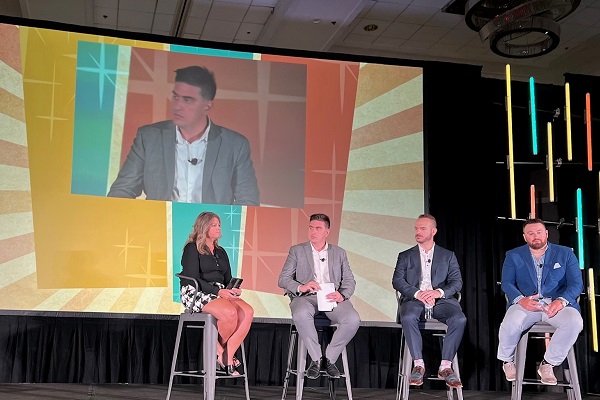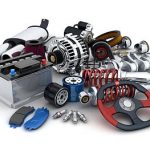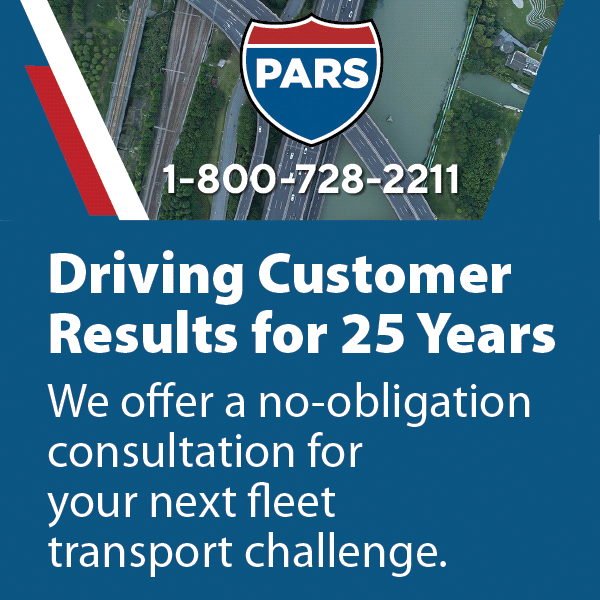
By Tod Trousdell, Fleet Marketing Consultant and Partner/RobertsTrousdell Communications
November 1, 2023
Inflation. Consolidation. Shortages.
The last few years have been hard on fleets, most of whom have been dealing with industry disruption since the start of the pandemic. But of all of the problems affecting fleets, perhaps none has been worse than supply chain disruption. From shortages of materials and parts to transport and labor issues, every corner of the industry has felt the negative effects.
Given these challenges, how can smart fleets navigate the rough seas of supply chain disruption?
Hoping to answer this question and more, the team at AFLA assembled some of fleet’s top supply chain leaders to participate in a one-time panel discussion at this year’s annual conference in October.
 Narrated by industry veteran Terri Stiffler, VP of Client Success at Acertus, the experts included Luca Iannuzzi, Head of Supply Chain at upfitter Ranger Design; Jon Roig, Director of Supply Chain and Digital Transformation at Holman; and Mark Iorillo, Director of Sales & Marketing at CEI. In addition to examining the state of fleet’s supply chain, the panel offered practical advice for overcoming nagging industry disruption and supply chain challenges in their own fleets.
Narrated by industry veteran Terri Stiffler, VP of Client Success at Acertus, the experts included Luca Iannuzzi, Head of Supply Chain at upfitter Ranger Design; Jon Roig, Director of Supply Chain and Digital Transformation at Holman; and Mark Iorillo, Director of Sales & Marketing at CEI. In addition to examining the state of fleet’s supply chain, the panel offered practical advice for overcoming nagging industry disruption and supply chain challenges in their own fleets.
The group was quick to acknowledge the damage done to the supply chain while also lauding the resilient nature of the industry in dealing with it. An experienced interviewer, Stiffler wasted no time in addressing the elephant in the room – crippling vehicle shortages and their oversized effect on fleet.
 Acknowledging the severity of the issue and the part supply chain issues had in causing it, the panel agreed that vehicle acquisition was perhaps the single biggest problem fleets have faced in generations. Holman’s Roig pointed out the problem had become so acute that the overall allocation of new vehicles earmarked specifically for fleets had dropped from around 20% of all vehicles manufactured prior to Covid, to 15% – resulting in a staggering 33% drop in the number of new vehicles available to fleets.
Acknowledging the severity of the issue and the part supply chain issues had in causing it, the panel agreed that vehicle acquisition was perhaps the single biggest problem fleets have faced in generations. Holman’s Roig pointed out the problem had become so acute that the overall allocation of new vehicles earmarked specifically for fleets had dropped from around 20% of all vehicles manufactured prior to Covid, to 15% – resulting in a staggering 33% drop in the number of new vehicles available to fleets.
While the lack of vehicle availability was perhaps the panel’s hottest topic, Stiffler guided the group through a discussion on a variety of supply chain-related issues, including:
The Dangers of Inflation and Rising Costs
The panel addressed the nagging effects of inflation and rising costs, with CEI’s Iorillo pointing out that the biggest increases have come in upfit and repairs and that companies were working to smooth volatility of commodity pricing and labor costs.
The Need to Monitor Geopolitical Factors and Work with ‘Friendlies’
 Ranger Design’s Iannuzzi cautioned attendees not to underestimate the effect global events – and even the weather – can have on fleet’s supply chain. He also educated attendees on the importance of “friend-shoring” – or aligning with friendly partners and countries who share your company’s goals, values and ideals.
Ranger Design’s Iannuzzi cautioned attendees not to underestimate the effect global events – and even the weather – can have on fleet’s supply chain. He also educated attendees on the importance of “friend-shoring” – or aligning with friendly partners and countries who share your company’s goals, values and ideals.
The Importance of Identifying Risks and Making Improvements
Given the unpredictable nature of the past few years, the panel reminded attendees of the dangers of losing touch with vendors and the need to develop multiple points of contact and supplier risk assessments to ensure fleets have a clear view of what’s going on in their supply chain.
The Need for Accurate Information
All three panelists acknowledged the importance of optimized communication and highlighted the importance of obtaining and exchanging accurate information with vendors. Iorillo pointed out the importance of preparing employees and technology before issues occur, while Iannuzzi reminded attendees that the only way to ensure the information is correct is to find ways and build systems to verify it.
Developing Strategies to Combat Supply Chain Disruption
Besides updating conference attendees on the current state of fleet’s supply chain, the panel also offered strategies and practical advice for fighting the negative effects of industry disruption.
When asked how fleets could maximize vehicle allocation, Holman’s Roig suggested that it was important to maintain a voice at the table but to “always have a backup plan.” While CEI’s Iorillo discussed improvements in various cycle times and the importance of paying attention to things like parts delays and the effect they can have on fleets.
![]() Speaking as his panel colleagues nodded in agreement, Iannuzzi told the audience that the key to creating a strong and stable supply chain was taking a “proactive vs reactive” approach, something he said had helped Ranger Design achieve the fastest lead times of any upfitter in fleet. He also stressed the importance of staying “close” to suppliers and vendors.
Speaking as his panel colleagues nodded in agreement, Iannuzzi told the audience that the key to creating a strong and stable supply chain was taking a “proactive vs reactive” approach, something he said had helped Ranger Design achieve the fastest lead times of any upfitter in fleet. He also stressed the importance of staying “close” to suppliers and vendors.
“We do everything we can to keep our finger on the pulse of our supply chain,” said Iannuzzi. “For us, it’s about avoiding surprises. We don’t just take for granted that everything is OK because a supplier says so. We make sure our vendors are auditing and validating and ensuring they are always prepared to handle our needs.”
Iannuzzi said another key to avoiding supply chain headaches was “getting ahead” of potential issues and identifying partners who create a “stronger, more nimble experience” that minimizes mistakes. Echoing Iannuzzi’s sentiments, CEI’s Iorillo said that as basic as it sounds, “communication is key” to maintaining an optimal supply chain.
Bright Spots Exist, Uncertainty Remains
On a positive note, all three panelists felt the supply chain had shown marked improvement over the past 6 to 12 months. At the same time, no one suggested supply chain issues were behind fleet.
“We’re seeing some positive signs,” said Roig. “Supply and demand challenges are easing, there are some small OEM incentives, just little things,” that make him feel like things are getting better.
 Wrapping the session, Stiffler told the panel she had crafted one final issue for it to address – the UAW strike that had started the week of the conference, an event the panelists believe has the potential to plunge the supply chain back into chaos.
Wrapping the session, Stiffler told the panel she had crafted one final issue for it to address – the UAW strike that had started the week of the conference, an event the panelists believe has the potential to plunge the supply chain back into chaos.
Speaking for the group, Iannuzzi said that while the strike was concerning it was important “try to think beyond the strike and prepare for what comes after the current situation,” while Stiffler jumped in to point out that non-union automakers like Mercedes, Hyundai and Nissan stood to gain market share.




